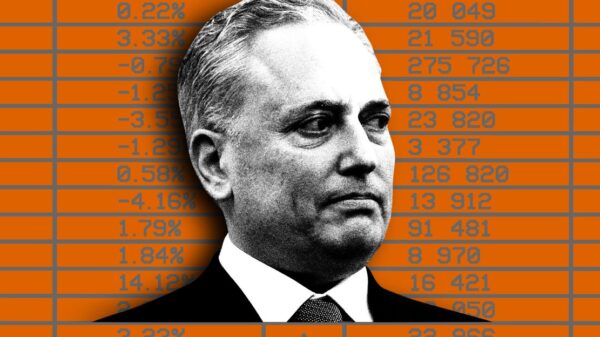Shares of BMW experienced their most significant drop in a year following a profit warning issued by the company. The German luxury car manufacturer cited weaker-than-expected sales in China and ongoing trade uncertainties between the U.S. and the European Union as primary factors for this revision. As a result, BMW now projects its automotive margin for 2025 to be in the range of 5% to 6%, a decrease from the previous estimate of 5% to 7%.
The updated guidance includes key figures that reflect BMW’s current challenges. According to data from Bloomberg, the revised automotive EBIT margin is expected to be between 5% and 6%, with a consensus estimate of 5.7%. Additionally, the automotive return on capital employed is now projected at 8% to 10%, down from 9% to 13%. Group earnings before tax are anticipated to decline slightly, while free cash flow is expected to exceed €2.5 billion, a reduction from the previous forecast of above €5 billion.
Analysts from Bernstein noted that the downgraded guidance aligns with the consensus but expressed disappointment regarding the announcement of declining sales in China and increased tariff-related costs.
Analyst Reactions to Profit Warning
Market reactions from various analysts highlight the broader implications of BMW’s profit warning. Morgan Stanley analyst Javier Martinez de Olcoz Cerdan stated that the decline in volume and margins had been anticipated, especially as BMW was the only major European automobile manufacturer not to issue a profit warning during the second quarter. However, he pointed out that the free cash flow figures fell short of expectations, which could affect future dividends.
Similarly, JPMorgan analyst Jose Asumendi indicated that the narrowing of automotive margins is influenced by both lower sales volumes in China and pricing pressures. Despite these challenges, he remains optimistic that most impacts on earnings and cash flow are temporary, suggesting that BMW could recover these losses between the fourth quarter of 2025 and the first half of 2026. He emphasized the importance of stabilizing sales momentum and pricing power in China to maintain the firm’s long-term competitiveness.
On the other hand, Citi analyst Harald Hendrikse raised concerns about BMW’s exposure to the Chinese market, suggesting that the issues faced there may be “irreversible.” He pointed out that BMW, similar to other automakers, has been overly optimistic in its guidance, potentially jeopardizing its standing in the competitive market.
Market Context and Future Outlook
The automotive sector in Europe is currently experiencing turbulence, with BMW shares in Germany remaining flat for the year amid decreasing sales and a growing presence of Chinese brands like BYD in the European market. This competitive pressure is contributing to a squeeze on market share for established players. As a result, the Stoxx 600 Autos & Parts Index is down 2% today.
It is crucial to note that China represents BMW’s largest market by revenue, contributing 22% compared to 19% from the U.S. The decline in sales from this key market could have significant implications for the company’s overall performance in the coming years.
With shares currently trading well below their peak in 2024, the outlook for BMW remains uncertain. The company’s ability to navigate these challenges will be pivotal in determining its future trajectory as it contends with shifting market dynamics and evolving consumer preferences.








































































